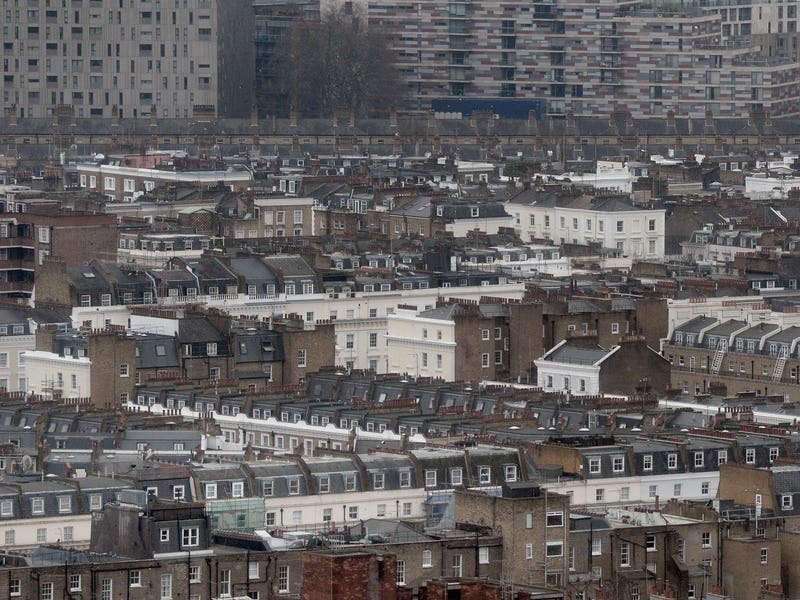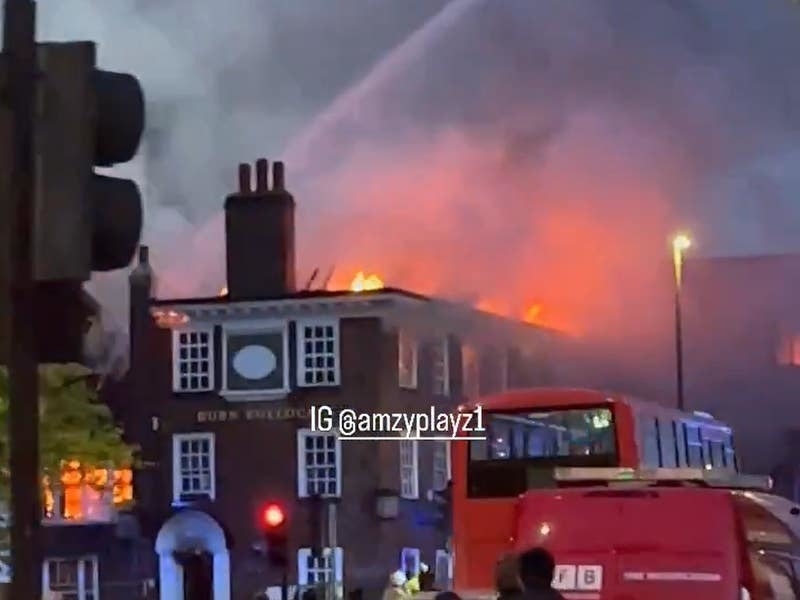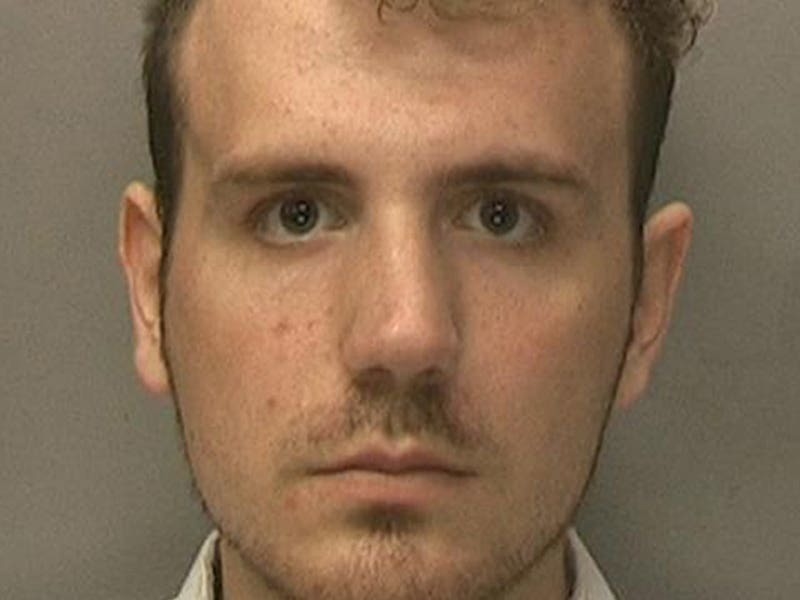The average house price fell by about £1,000 in April, following three months of increases, according to an index.
Across the UK, the typical property value fell by 0.3% month-on-month, taking it to £286,896 in April, Halifax said.
In cash terms, this was a £995 decrease compared with an average house price of £287,891 recorded in March.
Halifax said it expects to see further downward pressure on house prices over the course of this year.
Kim Kinnaird, director at Halifax Mortgages, said: “After three consecutive months of growth, the average UK house price fell in April, down by 0.3% or around £1,000 over the month.
“A typical property now costs £286,896, which is around £7,000 below last summer’s peak, though still some £28,000 higher than two years ago.
“House price movements over recent months have largely mirrored the short-term volatility seen in borrowing costs.
“The sharp fall in prices we saw at the end of last year after September’s mini-budget preceded something of a rebound in the first quarter of this year as economic conditions improved.
“The economy has proven to be resilient, with a robust labour market and consumer price inflation predicted to decelerate sharply in the coming months.
“Mortgage rates are now stabilising and though they remain well above the average of recent years, this gives important certainty to would-be buyers.
“While the housing market as a whole remains subdued, the number of properties for sale is also slowly increasing, as sellers adapt to market conditions.
“Alongside a market-wide uptick in mortgage approvals, these latest figures may indicate a more steady environment.
“However, cost-of-living concerns remain real for many households, which will likely continue weigh on sentiment and activity.
“Combined with the impact of higher interest rates gradually feeding through to those re-mortgaging their current fixed-rate deals, we should expect some further downward pressure on house prices over the course of this year.”
Its report said: “One factor behind this difference may be that with rents continuing to rise sharply, it’s becoming increasingly cost-effective to purchase a home, despite the challenge of raising a deposit and higher mortgage borrowing costs.”
Jeremy Leaf, a north London estate agent, said: “These figures show we cannot be complacent about recovery as cost of living and mortgage worries persist, which are making buyers cautious about longer-term commitments unless they see real value.
“However, there is no doubt that we are much busier than we were a few months ago and the underlying feeling is that we are over the worst and will continue on a relatively even keel despite some ups and downs along the way.”
Iain McKenzie, CEO of the Guild of Property Professionals, said: “Sales are holding steady for the time being and many estate agents are now able to offer more choice after spending the winter trying to replenish their stock.”
Matt Thompson, head of sales at estate agent Chestertons, said: “Many house hunters used the Easter holidays to continue their property search and arrange viewings for early May.
“Due to London’s chronic undersupply of properties, the market remains challenging, with some properties attracting several offers from interested buyers.”
Halifax’s figures were released after Nationwide Building Society said last week that, based on its data, the average UK house price increased by 0.5% month-on-month in April, following seven consecutive falls.
Tom Bill, head of UK residential research at Knight Frank, said: “You can quibble about whether prices are up or down, but the big picture is that annual growth is broadly flat and transactions clearly hit their low point in January.
“It should be a steady year, with the impact of a recovering economy kept in check by mortgage rates that are notably higher than 18 months ago.”
Chris Barry, director at Gloucester-based conveyancer Thomas Legal, said: “As it often does, the Halifax house price index contrasts with that of the Nationwide, which showed a 0.5% increase in prices in April.
“Either way, sentiment on the ground is improving by the day.”
“The supply of property is still scarce, especially in high-demand areas, where prices are starting to edge up once more.”
The Bank of England’s recent Money and Credit report said that mortgage approvals for house purchases “rose significantly” to 52,000 in March, from 44,100 in February.
John Choong, equity and markets research analyst at InvestingReviews.co.uk, said: “Crucially, mortgage approvals, which serve as a forward-looking indicator for future house prices, are starting to rebound.”
Nicky Stevenson, managing director at estate agent group Fine & Country said: “There are signs that lower prices and better negotiation prospects for buyers (are) leading to a resurgence in activity, with mortgage approvals rising significantly in March.”
Mark Harris, chief executive of mortgage broker SPF Private Clients, said: “First-time buyer numbers continue to prove resilient and with lenders returning to higher loan-to-value products, this will assist those struggling to get on the housing ladder.”
Simon Gerrard, managing director of Martyn Gerrard estate agents, said: “The early months of the year are usually a bit slower, whereas spring has traditionally seen a lot of house-buying activity.”
Here are average house prices and annual house price changes over the past year, according to Halifax. Its annual change figures for the UK’s nations and regions are based on the most recent three months of approved mortgage transaction data:
– East Midlands, £240,547, 1.4%
– Eastern England, £332,902, minus 0.4%
– London, £538,409, minus 0.2%
– North East, £168,941, 3.0%
– North West, £223,678, 2.7%
– Northern Ireland, £186,846, 2.7%
– Scotland, £201,489, 2.2%
– South East, £387,469, minus 0.6%
– South West, £301,722, minus 0.1%
– Wales, £216,559, 1.0%
– West Midlands, £249,554, 3.1%
– Yorkshire and the Humber, £203,860, 2.6%






